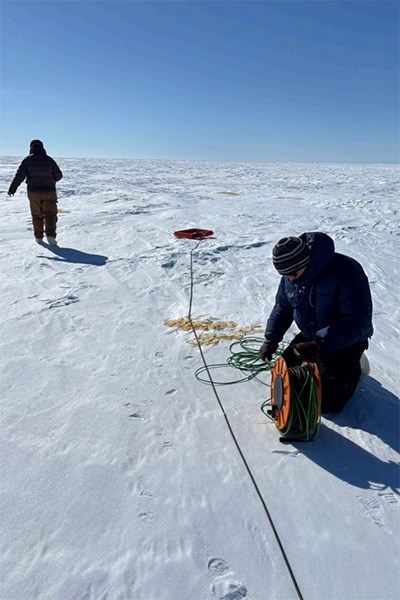
The NSF-funded Thaw Below Zero project wrapped its inaugural spring field season after covering more than 4,000 miles by snowmachine across the Arctic Coastal Plain. The three-week campaign stretched from Utqiaġvik to Teshekpuk Lake, where researchers tracked signs of permafrost degradation in a region warming faster than almost anywhere on Earth.
Over the course of 17 days, the team:
These data will guide return visits planned for August and September, which will include electrical resistivity imaging and deeper coring. The spring findings are also slated for a strong showing at the 2025 AGU Fall Meeting, with proposed talks on saline permafrost dynamics and freezing-point depression in Arctic soils.
The campaign was made possible in part by NSF’s Research Support and Logistics “one-year rule,” which allowed the team to stage, prepare, and deploy with precision—no small feat in terrain shaped by melt, wind, and shifting ice.
Image top: TEM measurement at a shallow lake where a natural gas condensate seep has penetrated to the surface through what is thought to be related to thawing saline permafrost.
2025
December
November
October
September
August
July
February
January
2024
December
October
September
August